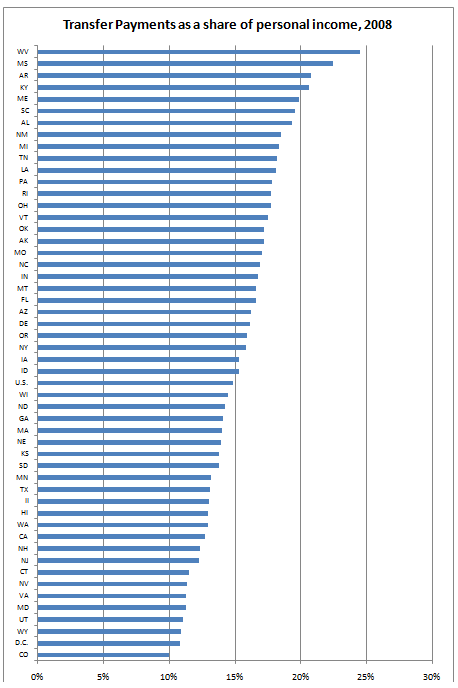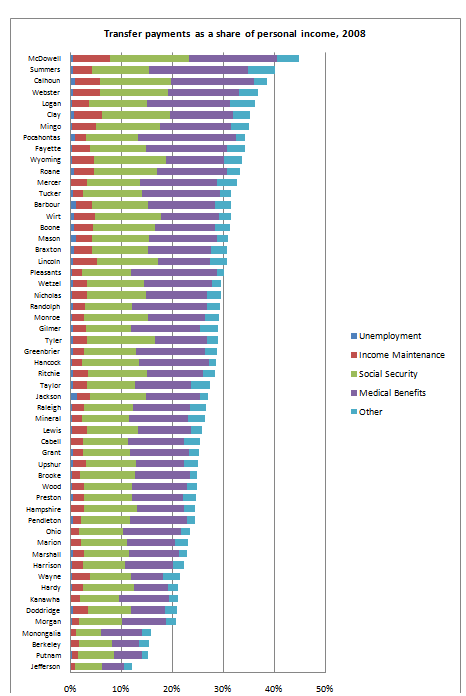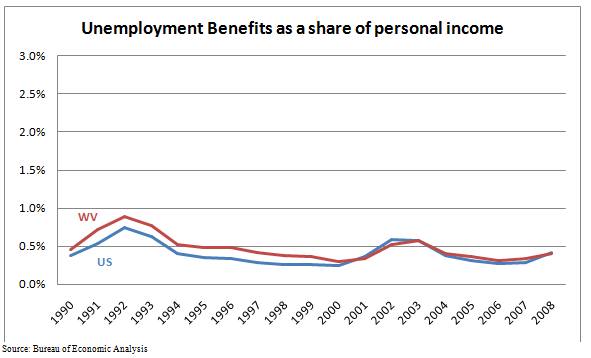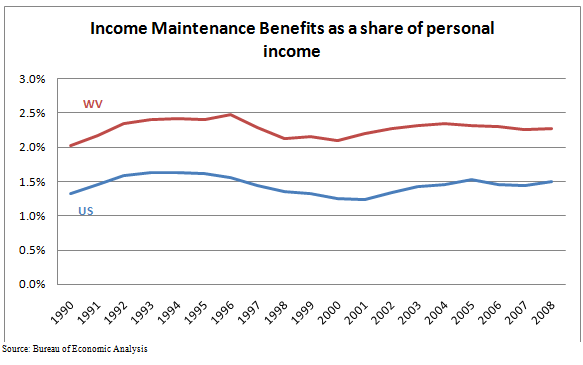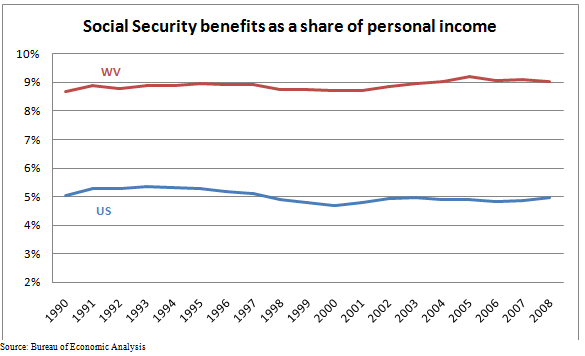West Virginia has one of the lowest per capita incomes in the country, and nearly 25 percent of personal income in West Virginia comes from government transfer payments. The national average is just under 15 percent. Transfer payments are mainly made up of payments by the government for various social benefit programs. These programs include Social Security, Medicare, Medicaid, unemployment insurance, public assistance and others. Transfer payments make up a larger share of personal income in West Virginia than in any other state.
Source: Bureau of Economic Analysis
To understand why transfer payments make up such a large share of personal income in West Virginia, first it helps to understand what makes up the payments, and where West Virginia differs from the rest of the country. This next chart shows transfer payments by county in West Virginia and also breaks the payments down by category.
Source: Bureau of Economic Analysis
Unemployment insurance, income maintenance programs, social security, and medical benefits appear to be the main drivers behind West Virginia’s transfer payments. Now the question is how West Virginia differs from the rest of the country and why.
Unemployment benefits have made up less than 1 percent of West Virginia’s personal income since 1990, which is roughly equal to the national average. Unemployment benefits are not creating the difference.
Income maintenance benefits include welfare benefits like supplemental security income, food stamps, and other forms of family and income assistance. These benefits have made up between 2 and 2.5 percent of personal income in West Virginia since 1990, roughly 1 point higher than the national average. Since West Virginia is a poorer state, you could expect this number to be higher, but it still doesn’t fully explain the overall difference. Something other than welfare gives West Virginia its large share of transfer payments.
With social security, we are starting to see some real differences. Social security benefits have consistently made up 9 percent of West Virginia’s personal income since 1990, about 4 points higher than the national average. The reason for this is simple,
West Virginia has the second oldest population in the country. An older population means more retired persons, which leads to more social security payments.
With medical benefits, which mainly include Medicare and Medicaid, the picture becomes even more clear. Medical benefits make up almost 10.5 percent of West Virginia’s personal income, compared to the national average of just under 7 percent. Even more important, that number has grown substantially since 1990 for the state and the country overall. This is due to the rising costs of healthcare, and the growing number of seniors drawing Medicare benefits. Also playing a role is the
poor health of West Virginians.
West Virginia ranks in the top three in the following categories among the states:
- prevalence of smoking (1)
- cancer deaths (2)
- cardiovascular deaths (3)
- high cholesterol (1)
- high blood pressure (2)
- diabetes (1)
- obesity (2)
West Virginia also has high levels of air pollution and high levels of preventable hospitalizations.
With an older, unhealthy population, its no surprise that transfer payments make up such a large percentage of West Virginian’s personal income. As the population continues to age, that number will grow, unless we begin to invest in our future population and take steps to control healthcare costs.
